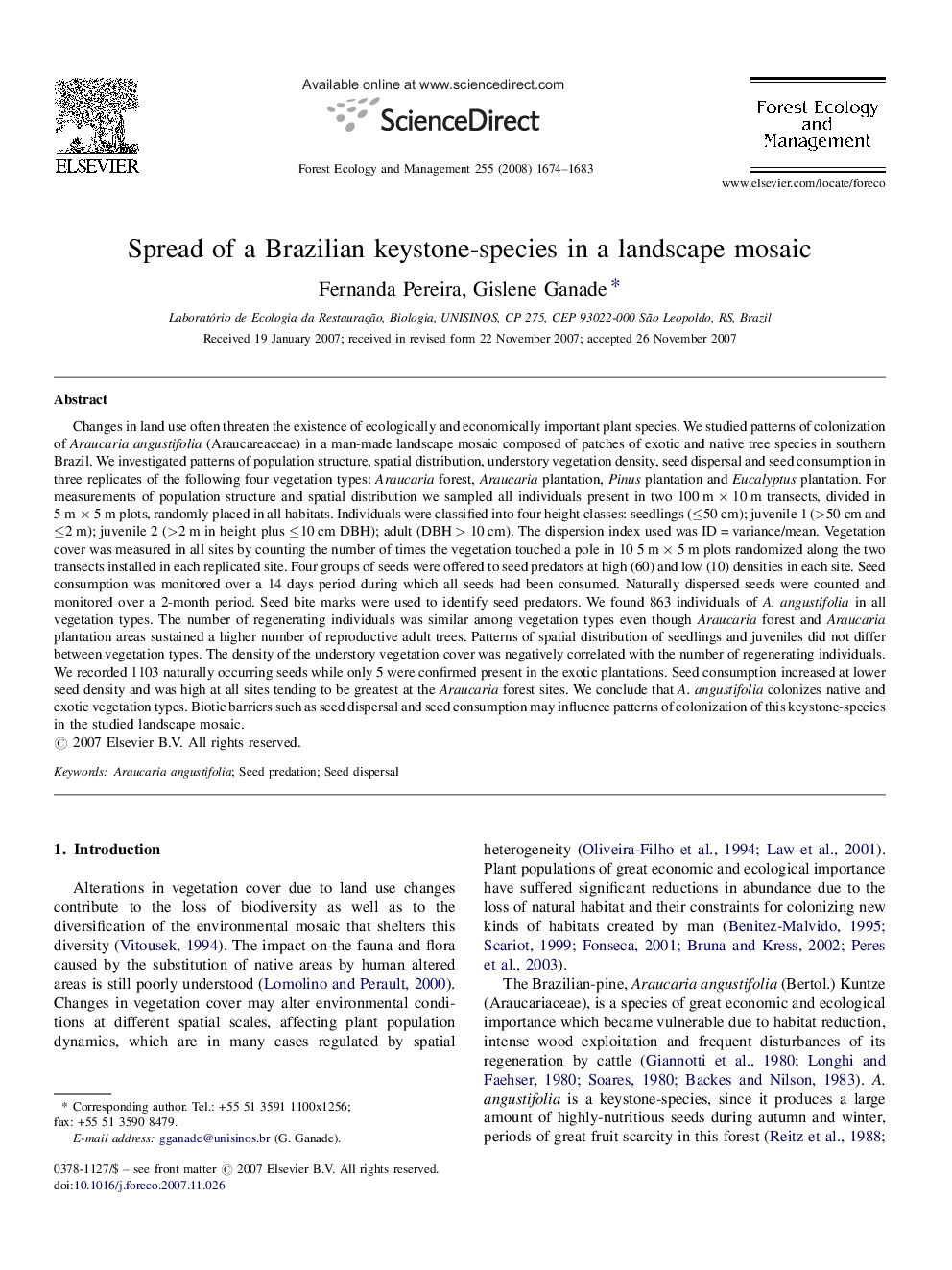| Article ID | Journal | Published Year | Pages | File Type |
|---|---|---|---|---|
| 89498 | Forest Ecology and Management | 2008 | 10 Pages |
Changes in land use often threaten the existence of ecologically and economically important plant species. We studied patterns of colonization of Araucaria angustifolia (Araucareaceae) in a man-made landscape mosaic composed of patches of exotic and native tree species in southern Brazil. We investigated patterns of population structure, spatial distribution, understory vegetation density, seed dispersal and seed consumption in three replicates of the following four vegetation types: Araucaria forest, Araucaria plantation, Pinus plantation and Eucalyptus plantation. For measurements of population structure and spatial distribution we sampled all individuals present in two 100 m × 10 m transects, divided in 5 m × 5 m plots, randomly placed in all habitats. Individuals were classified into four height classes: seedlings (≤50 cm); juvenile 1 (>50 cm and ≤2 m); juvenile 2 (>2 m in height plus ≤10 cm DBH); adult (DBH > 10 cm). The dispersion index used was ID = variance/mean. Vegetation cover was measured in all sites by counting the number of times the vegetation touched a pole in 10 5 m × 5 m plots randomized along the two transects installed in each replicated site. Four groups of seeds were offered to seed predators at high (60) and low (10) densities in each site. Seed consumption was monitored over a 14 days period during which all seeds had been consumed. Naturally dispersed seeds were counted and monitored over a 2-month period. Seed bite marks were used to identify seed predators. We found 863 individuals of A. angustifolia in all vegetation types. The number of regenerating individuals was similar among vegetation types even though Araucaria forest and Araucaria plantation areas sustained a higher number of reproductive adult trees. Patterns of spatial distribution of seedlings and juveniles did not differ between vegetation types. The density of the understory vegetation cover was negatively correlated with the number of regenerating individuals. We recorded 1103 naturally occurring seeds while only 5 were confirmed present in the exotic plantations. Seed consumption increased at lower seed density and was high at all sites tending to be greatest at the Araucaria forest sites. We conclude that A. angustifolia colonizes native and exotic vegetation types. Biotic barriers such as seed dispersal and seed consumption may influence patterns of colonization of this keystone-species in the studied landscape mosaic.
